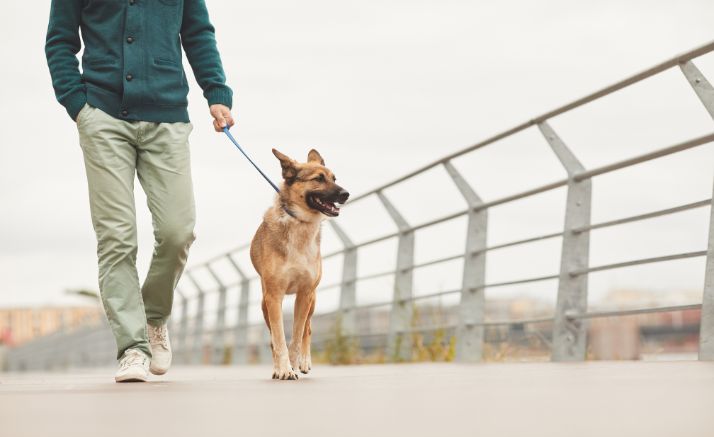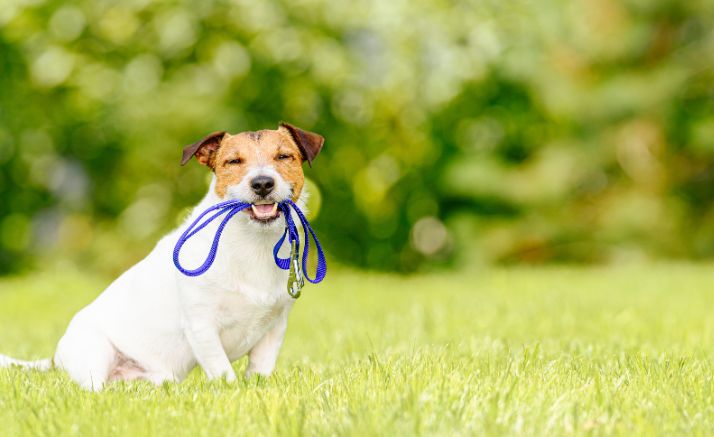Ah, the simple pleasure of a leisurely stroll – for many of us, it’s a cherished ritual that refreshes the mind, invigorates the body, and nourishes the soul. But did you know that daily walks aren’t just beneficial for us humans? They’re also an absolute game-changer for our beloved canine companions! In fact, walking for dogs goes beyond just physical exercise; it’s a cornerstone of their overall well-being and happiness. Let’s now explore the many benefits that daily walks bring into the lives of our furry friends.
10 Benefits of Walking for Dogs:
Healthy Hearts
Just like us, dogs need regular cardiovascular workouts to keep their hearts strong and pumping efficiently. Walking for dogs ensures that their blood circulation stays optimal, reducing the risk of heart disease and other cardiovascular ailments. Moreover, it helps regulate blood pressure, keeping it within healthy ranges.
Trim Waistlines
Obesity is a growing concern among our four-legged pals, leading to a host of health issues such as diabetes and joint problems. But fear not! Daily walks help maintain a healthy weight by burning excess calories and keeping those waistlines trim and svelte. Additionally, it aids in improving digestion and preventing constipation, ensuring overall gastrointestinal health.
Strong Muscles and Joints
As they trot alongside us, our canine companions engage in a full-body workout, strengthening their muscles and keeping their joints supple. This is especially crucial for older dogs, as it helps alleviate arthritis and joint pain. Furthermore, walking on different surfaces, such as grass, pavement, and gravel, provides varied resistance, enhancing muscle tone and coordination.
Exploration and Enrichment
Dogs are naturally curious creatures, and a walk around the neighborhood provides them with ample opportunities to satisfy their inquisitive minds. From sniffing out intriguing scents to observing the world around them, every step is a sensory adventure. Moreover, exposing them to new sights, sounds, and smells enriches their mental lives, preventing boredom and cognitive decline.
Alleviating Boredom
Just like humans, dogs can experience boredom and restlessness if cooped up indoors for too long. Daily walks break the monotony, offering mental stimulation and preventing behavioral issues like excessive chewing or barking. Additionally, interactive games and training exercises during walks provide mental challenges, keeping their minds sharp and engaged.
Bonding Time
Walking for dogs isn’t just about physical exercise; it’s also a wonderful bonding experience for both pet and owner. It’s a time to connect, communicate, and strengthen the special bond that we share with our furry companions. Furthermore, it fosters trust and reinforces obedience, as dogs learn to follow commands and cues while exploring the world together with their owners.
Canine Connections
Dogs are social creatures by nature, and regular walks provide valuable opportunities for them to interact with other dogs and humans. These positive social experiences help build confidence and improve their social skills. Additionally, exposure to a variety of people, pets, and environments during walks fosters adaptability and resilience, making them more confident and well-adjusted in different situations.
Environmental Exposure
Exposing our furry friends to various sights, sounds, and experiences during walks helps desensitize them to new environments and stimuli. This exposure is crucial for raising well-adjusted, confident dogs who are comfortable navigating the world around them. Moreover, it reduces fear and anxiety related to unfamiliar stimuli, preventing phobias and behavioral problems in the long run.
Channeling Energy
A tired dog is a well-behaved dog! Daily walks help burn off excess energy, reducing the likelihood of destructive behaviors like chewing furniture or digging up the backyard. Moreover, it promotes relaxation and mental well-being, leading to calmer behavior at home and fewer instances of hyperactivity or aggression.
Stress Relief
Just like us, dogs experience stress and anxiety. Walking for dogs acts as a natural stress-reliever, promoting relaxation and mental well-being. It’s the perfect antidote to a ruff day! Additionally, regular exercise releases endorphins, the body’s natural mood-boosters, leading to a happier and more contented pooch.
Also Read: How To Make Your Dog Active: Tips and Tricks
Tips for Walking your Dogs:
Consistency is Key: Establish a regular walking schedule and stick to it. Consistency helps maintain routine and provides dogs with a sense of security and predictability. Aim for at least one brisk walk per day, but adjust the frequency and duration based on your dog’s age, breed, and energy level.
Choose the Right Gear: Invest in a sturdy leash and a comfortable harness or collar that fits properly. Opt for a leash that allows for some freedom of movement while still providing control. Avoid retractable leashes, as they can pose safety risks and encourage pulling.
Practice Proper Leash Etiquette: Encourage loose leash walking by teaching your dog to walk politely by your side. Use positive reinforcement techniques, such as treats and praise, to reward desired behaviors. Avoid yanking or jerking the leash, as this can cause discomfort and undermine trust.
Stay Attentive and Alert: Be mindful of your surroundings and stay alert during walks. Watch out for potential hazards, such as traffic, cyclists, and other animals. Keep your dog on a short leash in busy or unfamiliar areas to ensure their safety.
Allow Sniffing Time: Let your dog explore and sniff their surroundings during walks. Sniffing is a natural behavior that provides mental stimulation and enrichment. Allow plenty of time for sniffing breaks, but gently redirect if they become too fixated on a particular scent.
Mix Up the Route: Keep walks interesting by exploring different routes and environments. Varying the scenery and terrain provides mental and physical stimulation, preventing boredom and monotony. Consider visiting parks, trails, and dog-friendly areas to spice up your walks.
Watch for Signs of Fatigue: Pay attention to your dog’s body language and watch for signs of fatigue or discomfort. If they start lagging behind, panting excessively, or showing signs of distress, it’s time to take a break or shorten the walk. Always prioritize your dog’s well-being and safety.
Stay Hydrated: Bring along a portable water bottle and bowl to keep your dog hydrated during walks, especially on hot days. Offer water regularly and encourage them to drink to prevent dehydration and overheating. Avoid walking during the hottest part of the day and stick to shaded areas when possible.
Clean Up After Your Pup: Be a responsible pet owner and always clean up after your dog during walks. Carry waste bags and promptly dispose of any messes in designated bins. Not only is it courteous to others, but it also helps maintain a clean and sanitary environment for everyone.
Enjoy the Journey: Last but not least, remember to enjoy the journey and cherish the moments spent with your furry companion. Walking for dogs is not just about physical exercise; it’s about bonding, exploring, and creating lasting memories together. So, lace up those shoes, grab that leash, and embark on countless adventures with your beloved pup by your side!
In conclusion, the benefits of daily walks for our canine companions are simply pawsome! From physical fitness and mental stimulation to socialization and behavioral benefits, walking for dogs is a holistic approach to promoting their overall well-being and happiness. So, grab that leash, lace up your shoes, and embark on a daily adventure with your furry best friend. Together, you’ll discover the joy of strolling side by side, one paw at a time.











